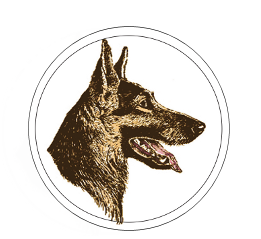Its been almost eight years since I have put pen to paper in order to generate some thought on the subject of dog training. It has been just as long since I competed in the obedience ring, but now that I have a new puppy, an Australian Shepherd, I have been visiting several shows, clubs and training establishments, in order to get back into the swing of things.
One of the first things that struck me was the obvious ongoing lack of confidence on the part of Instructors and Ring Stewards in the mental capacity of handlers and, in particular, competitors. “Return to your dogs…..Exercise not finished,” continues to resonate around the rings and training grounds. Can you believe it? Veteran “C” Test competitors, after literally tens of thousands of stay training sessions, still have to be reminded, upon being told to return to their dogs, that the exercise is not yet complete!! Obviously a bunch of morons! Does anyone really believe, that upon returning to the side of their animals, these handlers are going to be seized by a mental blockage of such magnitude that they will go into a praising frenzy before they are told “exercise finished”!! I really feel this is a gross insult to the intelligence of every handler! Are we all really so dof?
Why don’t we get similar reminders for all exercises? Throw your article. Send your dog. Take it. Finish(heel). …..exercise not complete! Exercise finished!!!
On a more serious note however, I had occasion recently to revisit the old chestnut of leading off with your left leg when moving from the stationary position. An extremely experienced and competent instructor got me scratching my head.
Coming from a military and police dog training background I have always struggled to come to terms with the practicality of teaching a handler to consistently lead off with the left foot from the stationary position. Whenever I was on duty with my dog, I always wanted the animal to stick like glue to my left side whenever I moved, unless I gave a command to the contrary. Whilst on patrol with my dog, the last thing I needed was to constantly have to worry about which foot I was moving first or where the dog was if I changed position. I certainly did not wish my dog to automatically “stay” if, for some reason or another, I unwittingly moved my right foot first in an attempt to rotate to my left, move to the side, or even take a step back! Unless I gave a specific command to stay, my dog had to readjust his position automatically. I put in many hours of training in order to fulfil this need. There was nothing worse than constantly having to tell one’s dog to heel every time one moved.
Personally, I can not recall any loss of marks for lagging or slowness on the part of any of my dogs whilst in the show ring, which could be attributed to my leading off with the right foot! I have consistently observed instructors advising handers to always lead off only on the left foot. I have also heard several of these instructors intimate that the dog should remain stationary if a handler leads off with the right foot.
To the best of my recollection, especially in all of the senior obedience or working dog competitions, there is no exercise during which a handler is expected to leave a dog in the stay without a command. On the other hand, dogs are consistently expected to move with the handler without any extra command! Also from a practical “out of the ring” perspective, I can also think of no practical instance where I would expect a dog to stay without a specific command to do so. I can however think of many where I would like a dog to keep close to my side, without any stimulus, other than the fact that I have changed position. It is for this reason that I believe a dog must move with you, unless given a command or signal to stay, no matter which leg you move. In fact even if I jump around using both feet at the same time, or crawl on all fours, my dog must move with me!
Having said all of the above however, one should never underestimate the value of good ringcraft and handlers should use every tool at their disposal in order to timeously and effectively telegraph their intentions to their dog. There is no doubt whatsoever that, if the left leg, which is touching the animal, moves first, the dog has a much greater chance of anticipating the handler’s intentions. I have to agree therefore ,that for any would be competitor, it is best to get into the habit of leading off with the left foot and the sooner it becomes a subconscious habit the better. This should not however be developed to the point where the dog remains stationary if a handler leads off with the right foot! I have personally observed cases where this has cost a nervous forgetful handler a qualification.
John Robert Cox
7 Aug 2000
